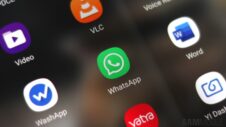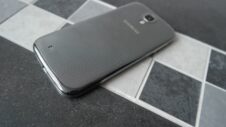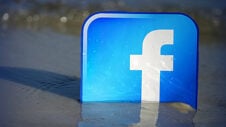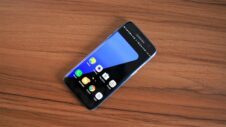One decade has gone by since Samsung released the Galaxy S4. And, as it turned out, the Galaxy S4 remains one of the most popular Android smartphones of all time. After unveiling the Galaxy S4 in May 2013, Samsung released the phone on April 27 of the same year. It's about to turn ten years old, so we thought “now” would be the perfect time to take a retrospective look at the Galaxy S4.
From today's perspective, the Galaxy S4 doesn't seem like a big deal. But back in 2013, the Galaxy S4 was all the hubbub. And the hype was warranted, as the S4 was the first to introduce many features that later became standard across Samsung phones and even devices from other brands.
Before we get into the nitty-gritty, let's have a quick recap of the old specs. Here's what the Galaxy S4 had to offer:
- 5.0-inch Super AMOLED FHD display with Gorilla Glass 3 protection
- Octa-core Exynos 5410 28nm SoC, featuring four Cortex-A15 cores clocked at 1.6GHz, four Cortex-A7 cores clocked at 1.2GHz, and a PowerVR SGX544MP3 GPU
- 2GB of RAM and 16/32/64GB of eMMC 5.0 storage expandable via microSD
- A single 13MP camera with 1080p@30fps video recording and a 2MP selfie camera (1080p@30fps recording)
- 3.5mm headphone port, GPS, GLONASS, Wi-Fi 802.11 a/b/g/n/ac, Bluetooth 4.0
- 2,600mh battery
- Android 4.2.2 Jelly Bean (later updated to Android 5.0.1 Lollipop) with TouchWiz on top
The Galaxy S4 had a plastic back and frame. Unlike previous models, it lacked an FM radio. And unlike more modern phones, the Galaxy S4 didn't have a fingerprint scanner or an IP dust and water resistance rating. But that wasn't a big deal in 2013, because nobody knew what they were missing.
Galaxy S4 throwback: A “first” in several categories
The Galaxy S4 was the first Samsung phone to boast a 1080p display. The S4 variant released in June 2013 (GT-i9506) was also the first commercially available phone to boast LTE Advanced capabilities.
The Galaxy S4 was also Samsung's first smartphone whose selfie camera could record 1080p videos. Some newer phones from other brands, such as the Xiaomi 13 Ultra introduced this week, haven't overcome the 1080p selfie recording ceiling even today.
And speaking of the camera experience, the Galaxy S4 was the first in the series to break the 10MP main camera resolution barrier, as it boasted a 13MP sensor — a big upgrade from the Galaxy S3's 8MP camera. Of course, nowadays, the Galaxy S23 Ultra has a bonkers 200MP primary camera.
And once again, for the first time ever, the Galaxy S4 allowed users to capture shots using the rear and front-facing cameras simultaneously through the “Dual Shot” picture-in-picture mode. Other interesting modes the S4 adopted (some from the Galaxy Camera) include:
- Sound & Shot: It allows users to record an audio clip when they capture a photo.
- Drama Shot: It combines a moving element from multiple photos into a single photo.
- Eraser: Users can take multiple shots with this mode and remove elements from a picture.
- Story Album: This feature coluld create albums of the user's daily events. Users could turn digital picture albums into hard copies of photo books, record sspecial occasions in event albums, and record travels in travel albums.
- Animated Photo: It would allow Galaxy S4 users to record short animated GIFs. These GIFs could be looped, reversed, and edited in various other ways.
- Remote Viewfinder: This feature could cast the camera viwfinder and controls to a different device using Wi-Fi Direct.
And to top it all off, the Galaxy S4 was the first in the series (even ahead of the iPhones of its time) to have dedicated video recording and photo capture buttons in the camera viewfinder. All phones before the S4 came along required users to switch between a photo or video mode. What a dreadful notion… Today, some of these quality-of-life improvements are expected. But we shouldn't forget that we got to this point gradually, with each new generation of phones.
Also worth noting is that the Galaxy S4 was the first in the series to boast an IR blaster that would allow it to become a universal remote for many devices.
And finally, the Galaxy S4 is one of the only two Samsung phones to have shipped with a built-in thermometer and a hydrometer sensor. The other device was the Galaxy Note 3, which we may take a closer look at later this year on its 10th anniversary. Stay tuned for that.
Not every Galaxy S4 smart feature stood the test of time
Before One UI, there was TouchWiz. And when it came to smart software features embedded into TouchWiz for the Galaxy S4, Samsung had some pretty wild ideas, many of which haven't stood the test of time. Here are a few:
- Smart Pause, Smart Rotation, and Smart Scroll: Smart Pause would pause videos automatically when the Galaxy S4 detected that nobody was looking at the screen. Using similar principles, Smart Rotation prevented the screen from rotating by detecting the position of the user's face. And Smart Scroll allowed the Galaxy S4 to automatically scroll webpages based on the user tilting the phone or their head.
- Air View and Air Gesture: Air View allowed users to access information without touching the screen, similar to how the S Pen does it. Air Gesture, however, was a more complex and arguably less useful feature that allowed Galaxy S4 users to control the phone without touching the display. Air Gestures included gestures to accept calls (Air call-accept), browse the image gallery (Air Browse), move home screen icons (Air Move), and scroll through pages (Air Jump).
Samsung's 2013 flagship was a huge commercial success
The Galaxy S4 represented one of the biggest leaps in Samsung's S-line history. Aside from a handful of meaningful hardware upgrades, the Galaxy S4 also introduced tons of clever software features and new ways to interact with the phone. And even though some of these features were rather gimmicky and not necessarily all that useful, Android smartphone users lapped them up. Even US President Barack Obama is said to have used a Galaxy S4 at one point.
Samsung sold 10 million Galaxy S4 units through pre-orders in the first two weeks. In two months, Samsung shipped more than 20 million Galaxy S4 smartphones. And by the end of the first six months on the market, Samsung had sold 40 million Galaxy S4 phones.
The Galaxy S4 is now known as one of the best-selling phones of all time. Samsung is estimated to have sold a total of 70 million units. As a result, the phone outsold even the iPhone 4S released in 2011 (~60 million), the iPhone X in 2017 (~63 million), and the iPhone 4 in 2010 (~50 million). It also outsold most Samsung phones, except for a few, such as the 2009 Samsung E1100 feature phone (~150 million).
















